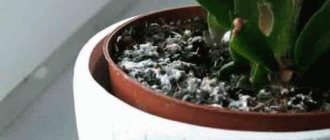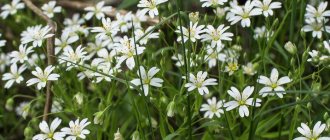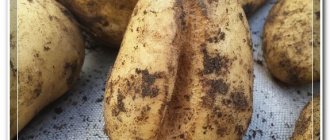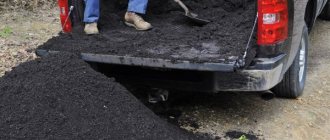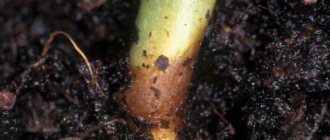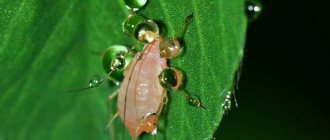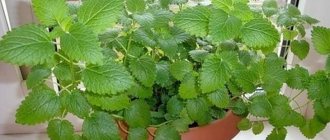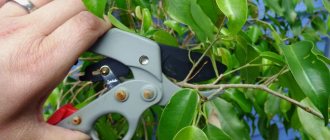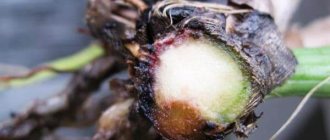One of the most common problems with indoor plants is mold, which appears on the surface of the soil due to improper care, high humidity or spores from the air. The fungus has the ability to quickly spread and infect unprotected areas of the plant. Find out how to stop the attack and prevent the need for complete soil replacement.
Mold on seedlings
Photo: Mold on seedlings
Unfortunately for many gardeners, white or gray mold often appears on seedlings that have just sprouted, producing poisons and can have a detrimental effect on living organisms. Of course, without taking prompt action to eliminate dangerous fungal spores, the seedlings begin to die in the initial phases of their growth. Because of this, people should take all necessary measures to combat mold.
Mainly due to contamination of the soil by spores, the seedlings subsequently die.
What to do: removal methods
To preserve seedlings, you can resort to different methods of combating mold. There are two main ones: practical and chemical .
Before you begin such actions, you need to carry out a number of simple activities:
- Remove all topsoil containing fungal spores;
- Use any object, for example a stick, to punch several holes in the ground to better drain it;
- Place the seedlings in a dry, warm place.
Chemical method
As a rule, you can always buy anti-mold preparations in hardware stores or at the market.
I would like to highlight the main leaders in this segment:
- Fitosporin M , which is a universal and inexpensive fertilizer. They also treat the land against fungal diseases;
- Mineral mixture with Ermak carbon, which allows you to maintain the required level of humidity. They sprinkle the soil with an equal layer of the mixture.
Folk way
With experience and time, people have learned to destroy mold on seedlings and in the ground using folk remedies.
These are the simplest, household remedies, and most importantly, everyone has them at home:
- Baking soda. With its help, half a teaspoon of soda is dissolved in a liter of hot water to obtain a cloudy solution, and the soil is watered and the seedlings are treated.
- Ash. It, two spoons, is also diluted with a liter of hot water, and the soil is watered with the indicated solution, and the young shoots are sprayed.
- River sand. It is poured onto a hot frying pan, after which the entire upper part of the soil is covered.
Video
Video material on the topic:
Coal
Coal has not only absorbent, but also disinfecting properties. The surface of the soil affected by mold must be generously sprinkled with coal. Pieces of charcoal, activated carbon in tablets, and even leftovers from a barbecue are suitable.
It is advisable to grind the coal, because the smaller the grind, the better. You can sprinkle the root collar and base of the potted plant. The coal will absorb the remaining pores and have a beneficial effect on the condition of the soil. It is useful to add it to the soil not only when mold occurs, but also for prevention.
This material reduces soil acidity, removes dangerous chemical compounds and metals from the soil, and due to the starch in its composition, it will become a useful fertilizer for any indoor flower.
When using charcoal to eliminate mold, you must follow several important rules:
- The coal layer must be changed every few days. By absorbing pathogenic spores, in such quantities it becomes an excellent breeding ground for bacteria and new colonies of fungi.
- If activated carbon tablets are used, under no circumstances should they be placed entirely in the pot. Actively absorbing moisture, the whole tablet also becomes a breeding ground for mold.
Mold on the ground in flower pots
As a rule, the appearance of this scourge occurs in cases that were described earlier. Also, the formation of fungal spores is often caused by the accumulation and retention of water in the flowerpot.
An ill-thought-out watering system in a pot clogs the holes, and excess moisture negatively affects the root of our plant.
If fungal spores are found on the ground, you must immediately:
- Replace contaminated soil with new soil
- Next, you need to loosen it for better ventilation of the soil at the bottom of the pot.
- Watering is limited, and for a more maximum effect, add a little quartz sand.
Why is it dangerous?
Penetrating into the human respiratory tract, it settles in the lungs. Accumulating in the body, mold causes various diseases, including allergies and toxic poisoning. Mold is especially dangerous for people with low immunity.
It negatively affects plants:
- mold is a fungus, after which more aggressive fungal races may appear, from which the roots of seedlings can rot, and blackleg disease is possible;
- plant nutrition is disrupted, mold waste products have an acidic reaction, and therefore change the acid-base balance of the soil for the worse for plants;
- oxygen does not reach them well;
- their immunity decreases and tissue regeneration deteriorates.
Mold is most dangerous for small seedlings that have not yet been picked. Adult seedlings have already mastered the entire volume of the pot well, their root system releases substances that suppress the growth of mold fungi, and the gardener will have to take care of the “babies”.
Seedling crops are grown indoors. It would seem that in a confined space nothing bad can happen to them, there is no contact with the street, and mold fungi simply have nowhere to come from. Why does the soil in seedlings become moldy?
Mold on the ground in a greenhouse, what to do
There are often cases where mold appears on the ground in a greenhouse. Mostly, the owners of greenhouses themselves are to blame for this by violating the technology of temperature, lighting, and ventilation.
Remember : without adhering to agricultural technology and preventive measures, it will be very difficult to eradicate mold.
White mold on the ground in a greenhouse
What to do when white mold has formed on the ground or plants?! It is necessary to begin treatment immediately, as it can spread quickly and destroy all plants in a short time.
It should be borne in mind that if a white coating appears on the soil, it may not necessarily be mold. When the seedlings are in a pot and there is a white coating on them, then most likely salts have been deposited. It must be removed with any object, and at first watered with warm water.
When white mold appears in a greenhouse, it is urgent to get rid of the infected areas and treat the plant with phytosporin. If the infestation area is large, then it is necessary to completely get rid of the plant.
Methods of soil disinfection
In protected ground (in a greenhouse or container) it is easier to carry out disinfection measures. And in open ground, it is almost impossible to completely destroy sources of infection, but even a novice gardener is quite capable of improving the soil.
Methods for disinfecting soil from fungal infections can be divided into:
- agrotechnical;
- biological;
- chemical.
Agrotechnical tillage
The vegetable garden should be divided into narrow beds (1.5-2 m). This will allow them to be processed more thoroughly and aerated, since in dense plantings, where it is humid and warm, the mushroom mycelium develops very quickly.
In addition, crop rotation must be observed. The same crop can be returned to its original place no earlier than after 3-5 years. During this period, the mycelium dies.
Crops susceptible to fungal infections are best planted after onions, garlic, cabbage, and legumes. Nightshades (tomatoes, potatoes, eggplants, peppers) cannot be planted after their own kind - nightshades. For planting, you need to use healthy material that is resistant to fungal infections, and sowing should be done with disinfected seeds.
You should also carefully remove affected tops from the plots and burn them immediately.
Remains of infected plants should never be buried in the soil or placed in compost heaps.
Do not overfeed plants with nitrogen. Fertilizers applied must be balanced - N:P:K=1:1.5:1.5.
Biological tillage
It is not advisable to use chemicals in a small area. It is better to give preference to substances that contain beneficial microorganisms that are safe for humans, animals, insects and other fauna.
The most effective working solutions of the preparations Baikal EM-1, Baikal EM-5, applied to the soil 2-3 weeks before the onset of autumn frosts. Microorganisms suppress the development of phytopathogens and improve the health of the soil.
You can also use ready-made biological fungicides Baktofit, Trichoderma Veride, Fitosporin, etc. After autumn digging, the biofungicide must be applied to the top layer of soil (5-10 cm thick). In the spring (after the snow melts and the onset of stable warm weather), soil treatment should be repeated.
Systematic disinfection of the soil and treatment of plants with antifungal biological products will help clear the soil of infection, protect plants from diseases, and your body from poisoning
Chemical soil treatment
If biological products are not effective enough, you cannot do without chemicals. Choose those whose packaging indicates hazard class 3-4.
In autumn, the soil can be treated with a 3% solution of Bordeaux mixture. In the spring (in April in dry weather), a 4% solution of copper oxychloride or a 2% solution of Oksikhom should be added to the top layer of soil (to a depth of 5-10 cm). Directly when planting, you can add HOM, Fitolavin or other drugs (according to the instructions) into the holes. The Healthy Earth preparation was created specifically to destroy fungal infections in the root zone of plants.
Thus, only comprehensive measures will help to thoroughly disinfect the soil on the site and prevent the development of fungal infections. Follow these recommendations every year - and your garden crops will produce a rich harvest of healthy fruits.
Soluble salts - efflorescence
Any water used for irrigation contains soluble salts. Their concentration varies: hard or well water contains a large amount of salts. The smallest amount of elements contains rain, melt, and so-called “soft” water. Depending on the microelements present, the color of the efflorescence will differ: calcium salts will give a white tint, and if there is an excess of iron, the soil on top will be yellow or brown.
This phenomenon most often affects heavy soils with poor drainage and frequent surface watering. When water does not completely wet the earthen ball, soluble salts do not reach the roots well and linger on the surface.
Overly fertilized soil can also cause efflorescence. If microelements do not have time to be absorbed by the flower, they begin to come to the surface.
How to deal with salt deposits
In order to get rid of plaque, eliminate the cause of its appearance:
- Carefully replace the top layer of soil.
- If possible, use soft water: rain or tap water, well settled.
- Reduce the frequency of watering by increasing the volume of liquid so that the earthen ball is completely saturated.
- Ensure good drainage and clear clogged drainage holes.
- Regularly loosen the top layer of soil.
How to distinguish mold from efflorescence
The fungus protrudes a few millimeters above the soil surface, its structure is soft, delicate, and can be easily rubbed between the fingers.
Efflorescence resembles a thin coating that is difficult to separate from the soil and feels rough to the touch.
How to soften water for watering flowers
The easiest way is to collect rainwater. But this option is not suitable for industrial areas, since raindrops will collect dust and chemical elements in the air.
- Use well-settled water. For watering, take the top layer, excluding shaking.
- Filtered water. There are special filters for hard water that soften it by retaining calcium salts.
- Melt water. Take regular tap water out into the cold or place it in the freezer. Liquid without salts freezes earlier; complete freezing should not be allowed. Then the unfrozen water is drained and the ice is defrosted. The water prepared in this way will be soft and biologically active – “alive”.
- It is good to use aquarium water for watering. But provided that no drugs or other additives were added to it.
